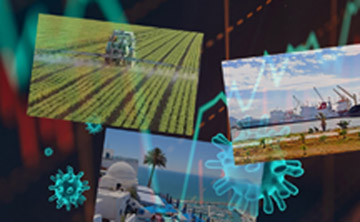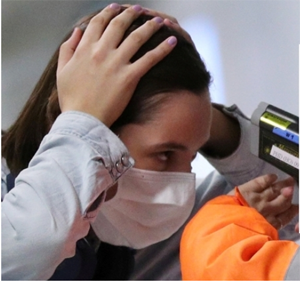
What more does it take to Keep the Covid-19 Epidemic Under Control and Relaunch The Economy?
This article first appeared on March 20th of 2020 in Leaders, a magazine widely read in North Africa and Europe. https://www.leaders.com.tn/article/29481-abdennaceur-karoui-que-faut-il-faire-de-plus-pour-garder-l-epidemie-du-corona-sous-control-et-relancer-l-economie
The paper, one of a series, was published in the wake of the Coronavirus pandemic, at a time of disarray, hysteria aggravated by many who were guessing the breadth of the upcoming danger while a clear absentia of many others, and abstention of decision makers as if they were following leaders in some developed countries. All were, in reality, confused due to the lack of information about the invisible enemy, and the little knowledge that induced little trust in proposed remedies.
The goal of the series of articles was to provide practical and science-based advises to help getting a grip on the propagation of the virus, and to give some hope to the public. The first article has bestowed many leaders with a boost of moral, and moved local enterprise to adopt ideas, then little known among industry, such as decontamination using UV-C light, ozone decontamination, and spray of hot soaped water,... Also local production of masks, reuse of garments after UV-C decontamination were proposed. Another paper debated the modes of propagation of the virus and contamination multiplication, how to stop nucleation of new virus sources by cutting the bridges to the virus and denying the raw materials, how to prevent the growth of contamination sources among tighter communities through regional islanding, redistribution when possible of the population activity to reduce the density, tracing all contamination sources in space and time and reconstructing the contamination history followed by isolation of risky cases and clusters, Bluetooth-based local honnest tracking of contamination sources, and how to develop herd immunity.
One of the papers insisted on planning four phases for the relaxation of the confinement to be able to relaunch wisely the economy without losing ground to the pandemic, which would devastate again public health and the economy. It insisted also on using each phase to plan and prepare operation means for the next, where production engineers and business planners should invent and design new methods of work, new production procedures, and new distribution methods of foods and goods. The sought new procedures were expected to change according to the need in next phase.
Another paper insisted on redefining the new normal, developing community resilience, and learning how to better deal with the virus. Leaders, workforce, and the public must keep moving along three complementary pathways, namely, simultaneously focusing on developing herd immunity, developing adequate and efficient therapeutic methods and vaccines, and focusing on food production and distribution. The herd immunity requires self-disciplinated social distancing, wearing masks and when needed disposable gloves, rigorous multi-form decontamination, sustained testing and non-negotiable quarantine of cases, redesigning public transportation, and redesigning air conditioning in public buildings. With the reduction of the workforce, we will not be able to avoid automation of food production and robotization of essential tasks, such as the decontamination. Unfortunately, because of the quick mutation of the virus, pharmaceutical industry is expected to redesign these vaccines periodically. Scientists think that old methods of vaccines against the SARS-Cov-2 are likely to be not efficient, and there might be a need for a revolutionary approach where for instance, instead of developing body immunity, the virus is directly attacked in one of its vital functionalities.

